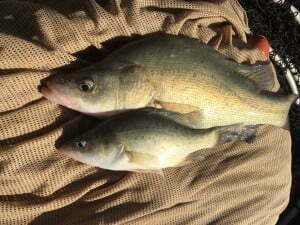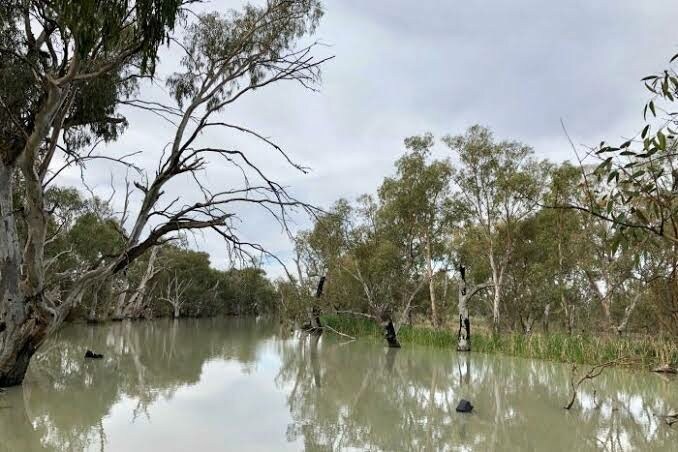Golden perch are thriving in waterways west of Hay, thanks to targeted flows supporting fish habitat. Creeks and wetlands between Hay and Balranald have been closely monitored to assess the role of targeted water deliveries to the area since the 2010 floods… And it’s good news for Golden perch, or ‘yellow belly’.

James Dyer from the Office of Environment and Heritage said evidence of fish recruitment was emerging with recent monitoring of environmental watering responses showing at least half the fish captured were Golden perch. The fish ranged in length from 10 to around 30 centimetres. The larger fish probably entered the system during floods in 2010 and 2012, but the smaller fish are likely to have resulted from targeted environmental flows in recent years.
Pulses of water – or ‘freshes’ – running through the river are known to trigger breeding of Golden perch. These flows can also help to carry the eggs and larvae along the river or creek. Higher flows can also carry drifting eggs and larvae out onto the productive floodplain wetlands. These juvenile fish later return to the river as a new generation of young fish. NSW and Commonwealth planned water deliveries appear to have carried Golden perch eggs and larvae into floodplain wetlands and creeks where they have developed.

Importantly, providing environmental water isn’t just about transport. Over the last ten years water deliveries have boosted the health of the wetlands themselves. Aquatic plants, plankton and insects are more abundant, all of which provide a source of food for native fish. So not only have the golden perch been able to breed, but water for the floodplain environment has provided a healthy habitat to sustain and nourish their young.

Golden perch may travel thousands of kilometres throughout the Murray-Darling river system either as drifting larvae or as actively swimming juveniles and adults. The young golden perch recorded in these wetlands may one day colonise other rivers and floodplains connected to the Murrumbidgee. The next objective is to help these fish find their way out of the local wetlands and back into the river using follow-up environmental watering events.
The detection of these fish demonstrates a great outcome which allows efforts to now focus on supporting healthy habitat for these important native fish. It also provides a good example which we can try to replicate again and again by smart use of environmental flows. Dr Katherine Cheshire from DPI Fisheries said fish played a critical role in the whole river system and were the basis of a billion dollar recreational fishing industry.
“Fish help to cycle nutrients within the river system and provide food for other parts of the food web including waterbirds. Looking after fish with environmental water provides a range of environmental, social and economic benefits, including better fishing for target species like yellow belly. We know that restoring fish populations through environmental water delivery and via the protection of natural flows can be an effective way to manage river health. The success of environmental watering in the Murrumbidgee is a credit to the collaborative effort of scientists, environmental water managers and environmental water holders in both the state and the Commonwealth,”
For more stories like these keep exploring the Finterest website, there are a few suggestions below.
Related stories:
120,000 Golden perch and silver perch released into Wallpolla Horseshoe Lagoon
What native fish need from flows at different life cycle stages



